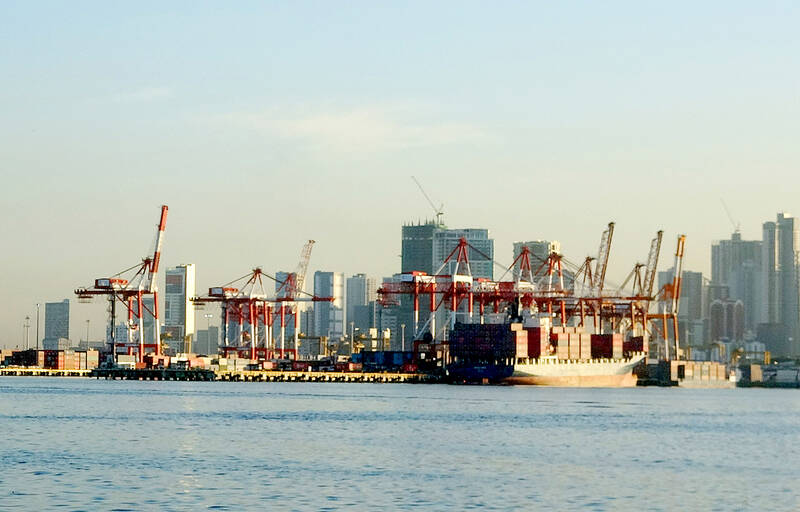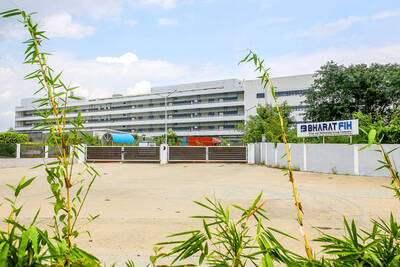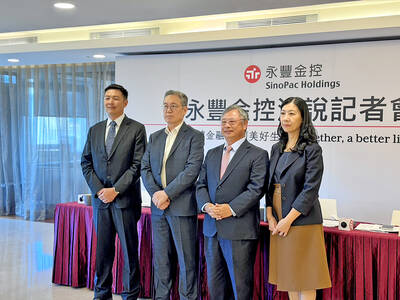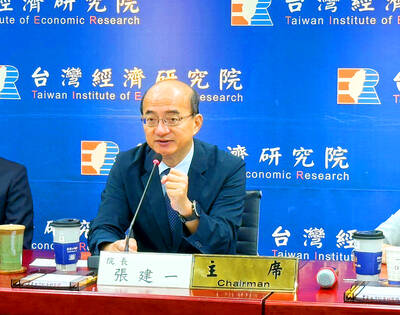The US’ decision to levy a 19 percent tax on imports from the Philippines has prompted concerns that this could discourage Taiwanese businesses from relocating their factories to the Southeast Asian country.
Meanwhile, export-oriented Taiwanese firms primarily targeting the US market are beginning to cut labor costs and shift their focus to the Philippine domestic market, according to Taiwanese business leaders based in the country.
US President Donald J. Trump announced a 19 percent tariff rate for goods from the Philippines after a meeting with President Ferdinand R. Marcos, Jr. in Washington on July 22, while Manila has agreed to remove all its tariffs on American goods.

Photo: CNA
The new tariff rate is just below the 20 percent threatened by Trump earlier last month, but still above the 17 percent rate announced in April.
The Philippines, a key US security ally in Southeast Asia, was expected to secure a more favorable tariff rate than other countries. However, Indonesia, Thailand, and Malaysia face the same 19 percent rate, while Vietnam faces 20 percent.
Both Taiwanese businesses operating in the Philippines and local Filipinos see the 19 percent tariff rate as “a rise rather than a reduction.”
Lin Teng-feng (林登峰), president of the Taiwan Association Inc Philippines (TAP), an organization that assists Taiwanese business owners in the Philippines, told CNA that an estimated 10,000 to 20,000 Taiwanese businesspeople are currently operating in the Philippines.
Most TAP members have already established themselves locally and cater to the Philippine domestic market, with only about 10 percent engaged in exports. As a result, the 19 percent tariff has little impact on most TAP members, Lin noted.
Lin said he believes that the new tariff regime primarily affects the willingness of foreign-based Taiwanese companies to relocate production to the Philippines.
If the tariff rate had stayed at the initial 17 percent, Taiwanese firms in other countries might have considered shifting operations to the Philippines, Lin said.
However, with tariffs rising instead of falling and the rate now roughly the same as other Southeast Asian countries, “Those who had considered moving to the Philippines may put their plans on hold,” he said.
For most Taiwan-based businesses in the Philippines, Lin said that fluctuations in the Philippine peso exchange rate and inflation pose greater challenges than Trump’s tariff policy as their raw materials are mainly sourced from Taiwan.
Lin also warned of the potential risk from Chinese dumping. If Chinese manufacturers, facing difficulties associated with exporting to the US, turn to dumping products in the Philippines, it could disrupt the local market. Whether that risk can be averted depends on how strictly Philippine customs enforces trade rules, he added.
The situation facing Taiwanese companies in the Subic Bay Freeport Zone differs from that of those in Metro Manila and surrounding provinces.
Chang Che-chia (張哲嘉), chair of the Taiwan Chamber of Commerce in Subic Bay, told CNA that Subic Bay is the home of about 100 Taiwanese businesses, roughly 80 percent of which are export-oriented and mainly target the US market.
He observed a noticeable drop in orders from US buyers over the past few months. Although the new tariff rate is now clear, the rate on the Philippines is not much different from that facing other Southeast Asian nations, so order volumes are unlikely to change significantly in the near future.
To cope with reduced orders, some Taiwanese factories in the Philippines are cutting employees’ workdays per week to lower expenses. Others, originally focused on exports, are now shifting to the domestic market of 116 million people, according to Chang.
Chang noted that while the current tariff rates are unlikely to attract more foreign Taiwanese companies, the Philippines still has significant investment potential if it improves administrative efficiency and strengthens its supply chain.
“If the setup process for factories could be sped up, and there are dedicated staff to explain complex tax incentives, more companies would be willing to come,” he said.

SETBACK: Apple’s India iPhone push has been disrupted after Foxconn recalled hundreds of Chinese engineers, amid Beijing’s attempts to curb tech transfers Apple Inc assembly partner Hon Hai Precision Industry Co (鴻海精密), also known internationally as Foxconn Technology Group (富士康科技集團), has recalled about 300 Chinese engineers from a factory in India, the latest setback for the iPhone maker’s push to rapidly expand in the country. The extraction of Chinese workers from the factory of Yuzhan Technology (India) Private Ltd, a Hon Hai component unit, in southern Tamil Nadu state, is the second such move in a few months. The company has started flying in Taiwanese engineers to replace staff leaving, people familiar with the matter said, asking not to be named, as the

The prices of gasoline and diesel at domestic fuel stations are to rise NT$0.1 and NT$0.4 per liter this week respectively, after international crude oil prices rose last week, CPC Corp, Taiwan (台灣中油) and Formosa Petrochemical Corp (台塑石化) announced yesterday. Effective today, gasoline prices at CPC and Formosa stations are to rise to NT$27.3, NT$28.8 and NT$30.8 per liter for 92, 95 and 98-octane unleaded gasoline respectively, the companies said in separate statements. The price of premium diesel is to rise to NT$26.2 per liter at CPC stations and NT$26 at Formosa pumps, they said. The announcements came after international crude oil prices

SinoPac Financial Holdings Co (永豐金控) is weighing whether to add a life insurance business to its portfolio, but would tread cautiously after completing three acquisitions in quick succession, president Stanley Chu (朱士廷) said yesterday. “We are carefully considering whether life insurance should play a role in SinoPac’s business map,” Chu told reporters ahead of an earnings conference. “Our priority is to ensure the success of the deals we have already made, even though we are tracking some possible targets.” Local media have reported that Mercuries Life Insurance Co (三商美邦人壽), which is seeking buyers amid financial strains, has invited three financial

CAUTION: Right now, artificial intelligence runs on faith, not productivity and eventually, the risk of a bubble will emerge,’ TIER economist Gordon Sun said Taiwanese manufacturers turned more optimistic last month, ending a five-month streak of declining sentiment as concerns over US tariffs, currency volatility and China’s overcapacity began to ease, the Taiwan Institute of Economic Research (TIER) said yesterday. The manufacturing business confidence index rose 1.17 points from June to 86.8, its first rebound since February. TIER economist Gordon Sun (孫明德) attributed the uptick to fading trade uncertainties, a steadier New Taiwan dollar and reduced competitive pressure from Chinese producers. Taiwan’s semiconductor industry is unlikely to face significant damage from Washington’s ongoing probe into semiconductors, given the US’ reliance on Taiwanese chips to power artificial